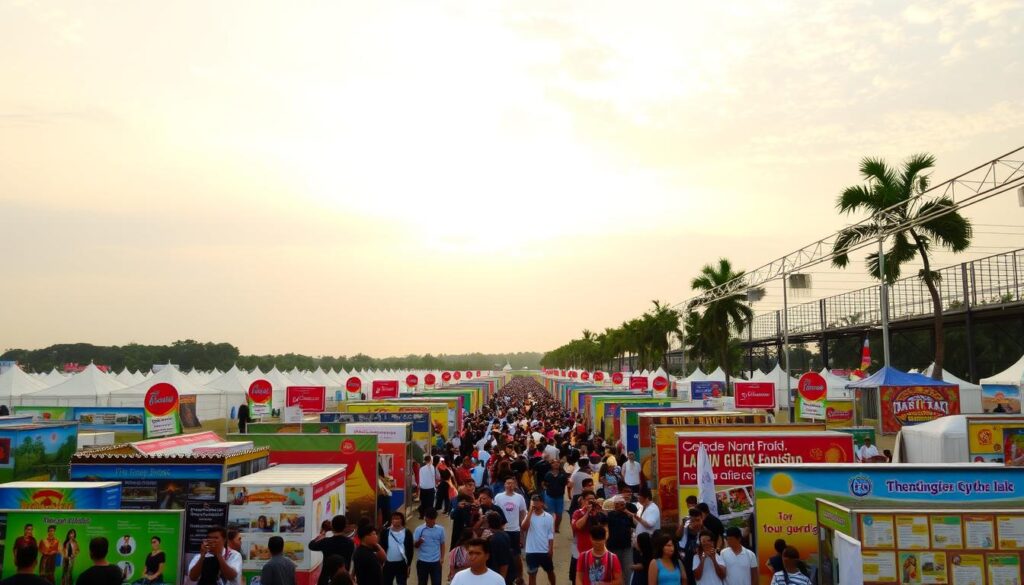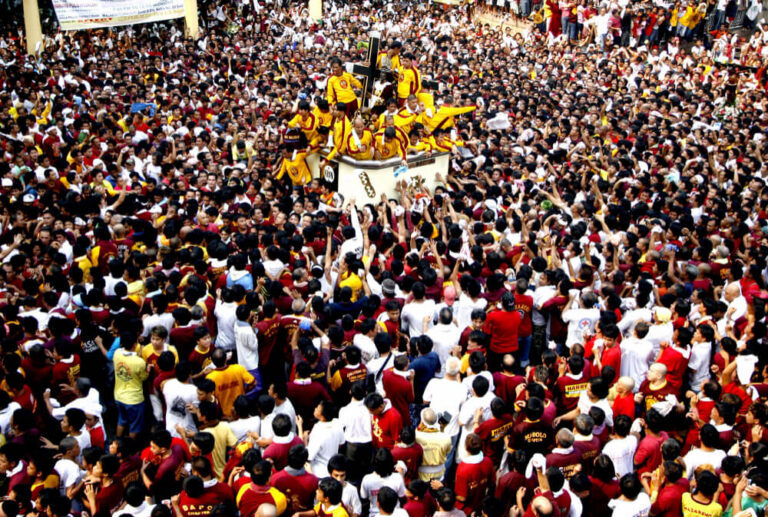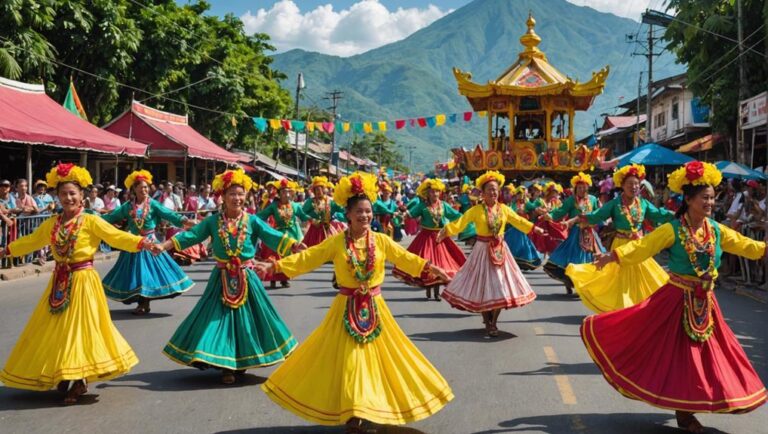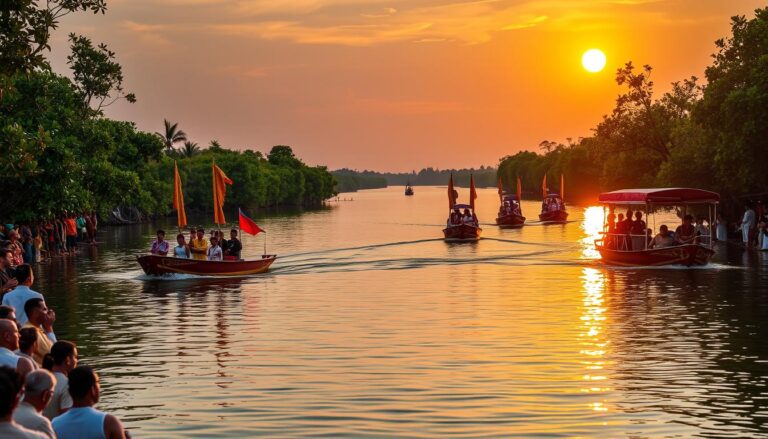Pistay Dayat: Ultimate Guide to Pangasinan’s Pistay Dayat Festival

Welcome to Pangasinan’s most iconic celebration! Known as the “Mother of All Festivals” in the province, this vibrant event honors the sea’s bounty and the region’s cultural heritage. Since its founding in 1970, it has grown into a month-long fusion of tradition, gratitude, and environmental awareness.
Every year, from early April through May, locals and visitors gather to celebrate the province’s coastal legacy. The festival blends lively parades, traditional dances, and modern competitions. Highlights include the colorful fluvial procession and community-driven clean-up drives, showcasing Pangasinan’s commitment to sustainability.
Beyond its environmental focus, the event features markets like the Pangasinan Tourism and Trade Expo. These platforms highlight local crafts and delicacies, giving travelers a taste of the region’s creativity. Whether you’re drawn to cultural exhibits or seaside concerts, there’s something for everyone.
This guide will walk you through the festival’s history, must-see activities, and practical travel tips. Let’s dive into the heart of the Philippines’ most dynamic sea festival!
Key Takeaways
- Celebrated annually from April to May, honoring Pangasinan’s coastal heritage.
- Combines cultural traditions with environmental conservation efforts.
- Features parades, local markets, and community clean-up initiatives.
- Easily accessible from Manila, making it a popular destination.
- Showcases traditional games, dances, and modern entertainment.
History and Cultural Significance of Pistay Dayat
What started as fishermen’s prayers for bountiful catches evolved into the Philippines’ most dynamic coastal event. This spring tradition blends centuries-old customs with modern environmental awareness, creating a unique cultural tapestry.
Origins and Evolution
In 1970, coastal families near Lingayen Gulf began gathering to thank the sea for its harvest. The name combines Spanish and Pangasinense words, meaning “celebration of the sea.” These simple beach picnics featured shared meals and traditional games.
By the late 1980s, the provincial government transformed it into a month-long festival. They added boat races and art competitions while keeping core traditions alive. Today’s events mix ancestral dances with eco-friendly initiatives like mangrove planting.
Traditions, Environment, and Community Impact
Local fisherfolk still open each pista’y dayat with bamboo raft offerings. This ritual honors the sea’s role in sustaining over 62,000 fishing families. Modern additions like recycled art contests reinforce ecological values.
| Era | Focus | Key Activities | Scale |
|---|---|---|---|
| 1970s | Thanksgiving | Family feasts Folk games |
Village-level |
| Present | Conservation | Coastal clean-ups Cultural contests |
Province-wide |
The festival’s dual purpose shines through events like the Ipatawir Artisanal Fair. Here, seaweed harvesters sell crafts beside climate change exhibits. This balance ensures traditions thrive while addressing modern challenges.
Major Festivities and Activities at Pistay Dayat
Pangasinan’s coastline transforms into a stage of creativity during this vibrant celebration. Over 20 towns collaborate to deliver events blending ancestral traditions with modern environmental values. From sunrise beach rituals to moonlit concerts, every activity honors the province’s connection to land and sea.
Waterborne Wonders and Coastal Care
The Banca Parada fluvial parade dazzles spectators along the Agno River. Fishermen craft elaborate floats depicting local legends like Limahong’s 1574 invasion. “Each boat tells our history through colors and shapes,” shares Mang Luis, a veteran boat builder.
Communities unite during the Lingayen Gulf Coastal Clean-up. Last year’s effort removed 1.2 tons of waste, with recycled materials transformed into art installations. Youth groups compete in sand sculpting contests, crafting temporary masterpieces that vanish with the tides.
Rhythmic Revelries and Cultural Pride
Street dance troupes from Mapandan and other towns electrify the Lingayen beachfront. Dancers in abel Iloko costumes perform the Binasuan, balancing glasses while moving to bamboo rhythms. Evening shows feature rising talents and bands like The Itchyworms.
| Event | Focus | Participants | Location |
|---|---|---|---|
| Limgas Pageant | Beauty & Intelligence | 25 Candidates | Provincial Capitol |
| Orchestra Showdown | Musical Talent | 35 Teams | Beach Amphitheater |
| Trade Expo | Local Crafts | 100+ Vendors | Lingayen Plaza |
The Limgas na Pangasinan pageant crowns ambassadors promoting provincial tourism. Winners advocate for coastal conservation while showcasing traditional baro’t saya gowns woven from local fabrics.
Travel and Tourism Information for Visiting Pangasinan
Planning your Pangasinan adventure? This coastal province offers smooth access and unforgettable experiences. From Manila, you’ll find well-maintained highways connecting to its 44 towns, with the provincial government ensuring clear travel routes. Don’t miss the annual Pangasinan Tourism and Trade Expo, where local crafts meet modern convenience.

How to Get to Pangasinan
Most travelers fly into Ninoy Aquino (Manila) or Clark airports. Regular buses from Victory Liner and Dagupan Bus Co. reach Lingayen in 4-5 hours. Private vans offer faster trips from Clark to Dagupan town in 3 hours.
| Route | Transport | Duration | Provider |
|---|---|---|---|
| Manila → Lingayen | Bus | 4-5 hrs | Victory Liner |
| Clark → Dagupan | Van | 3 hrs | Dagupan Bus Co. |
| Baguio → Bolinao | Jeepney | 2.5 hrs | Local Operators |
Exploring Local Attractions and Culinary Delights
Start at the Hundred Islands National Park – 124 limestone wonders perfect for kayaking. History buffs love the Manaoag Church, while foodies chase bangus (milkfish) dishes at Dagupan markets. The tourism expo showcases MSME-made products like handwoven fabrics and coconut sweets.
Coastal towns like Bolinao offer white-sand beaches beside cliffside caves. Try pigar-pigar (stir-fried beef) in Dagupan or crispy tupig rice cakes from roadside stalls. Local governments provide maps highlighting safe swimming zones and heritage trails.
Conclusion
More than colorful parades, Pista’y Dayat embodies Pangasinan’s soul. This annual celebration bridges generations through ancestral rituals and modern innovations. For over 50 years, the provincial government has partnered with coastal towns to preserve traditions while boosting livelihood through tourism.
From fluvial processions to eco-art contests, every activity highlights the sea’s cultural and economic role. Markets at the event spotlight local products, from woven fabrics to organic sweets, empowering small businesses. Visitors witness how towns balance heritage with sustainability.
This sea festival proves celebrations can drive change. It unites communities across the province, ensuring future generations inherit thriving traditions. Whether you join beach clean-ups or dance competitions, Pista’y Dayat offers a meaningful connection to Pangasinan’s heart.





